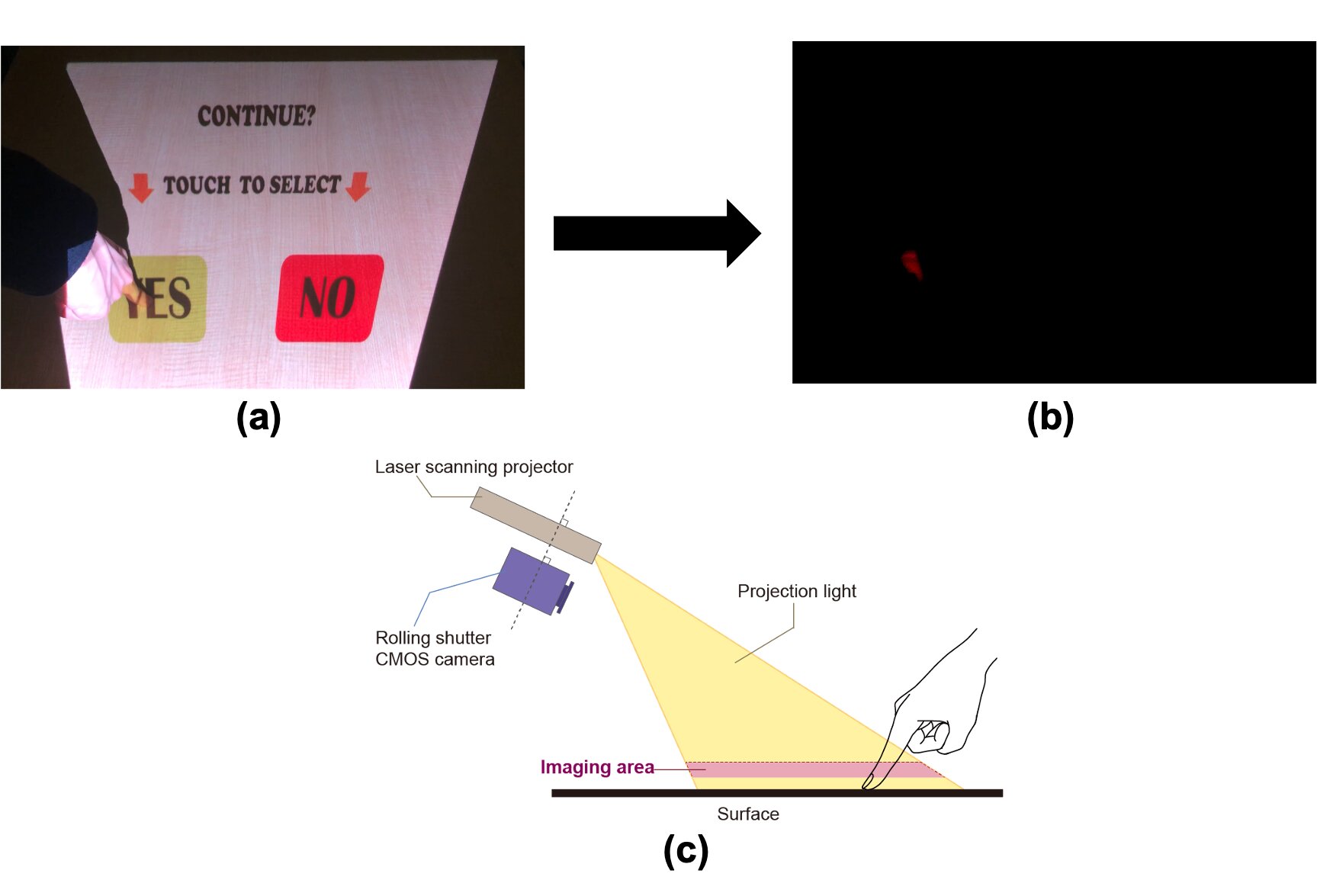
Turning the tables into touchscreens

Scientists from Nara Institute of Science and Technology (NAIST) used a synchronized projector and camera to produce a touchscreen-like interface on a flat surface. Because the camera only registered the user’s fingers when actually in contact with the surface, the need for any additional cameras, depth sensors, or light sources was eliminated. This work may lead to portable projection systems that can be used to create large interactive displays nearly anywhere.
Everyday life is full of handheld devices that show videos and accept touch input. These include smartphones, tablets, or even the credit card reader at your local store. However, larger touchscreen interfaces remain expensive and slow to respond. Projection systems that are currently available need multiple detectors, because a single camera usually cannot distinguish depth. Now, a team of scientists at NAIST has created a system that uses just one camera. “Typical cameras observe a three-dimensional situation as a two-dimensional plane. Thus, even if the position of a fingertip can be detected, it is difficult to know whether it is touching the surface or hovering above it,” senior author Yasuhiro Mukaigawa says.
The researchers took advantage of “slope disparity gating,” in which the projector scanning the table is synchronized with the camera, so that it captures only the region slightly above the surface. Using a dedicated image-processing algorithm, the touch of a finger could be localized with high efficiency. Because the same light source is used to produce the projected video as well as detect touch, the algorithm was not misled by the projected image.
“The method developed in the study can be used to produce a touch display on any flat surface. In the future, we will hope to expand to include touchless operations or even add gesture recognition,” Mukaigawa says. Also, because the method captures only the region slightly above the surface, privacy concerns are reduced, as human faces and other identifying details are not recorded at all.
Improving touch screens with AI
Mayuka Tsuji et al, Touch Sensing for a Projected Screen Using Slope Disparity Gating, IEEE Access (2021). DOI: 10.1109/ACCESS.2021.3099901
Provided by
Nara Institute of Science and Technology
Citation:
Turning the tables into touchscreens (2021, August 24)
retrieved 24 August 2021
from https://techxplore.com/news/2021-08-tables-touchscreens.html
This document is subject to copyright. Apart from any fair dealing for the purpose of private study or research, no
part may be reproduced without the written permission. The content is provided for information purposes only.
Stay connected with us on social media platform for instant update click here to join our Twitter, & Facebook
We are now on Telegram. Click here to join our channel (@TechiUpdate) and stay updated with the latest Technology headlines.
For all the latest Technology News Click Here
For the latest news and updates, follow us on Google News.

